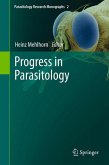This book provides insights into the research and programs currently related to schistosomiasis, and uses these insights to project into future years of work on schistosomiasis, from research to public health interventions. A secondary goal is to initiate conversations among those working on schistosomiasis about the future of their field, and by doing so lead to constructive efforts to identify and address the most critical questions and challenges related to schistosomiasis. The first 4 chapters address schistosome phylogenetics, gene expression, and the overall genome. The next 3 chapters explore the host-schistosome interaction at the larval to adult worm interface. The following 3 chapters explore the development of the host immune response to eggs, granuloma formation and factors affecting the development and regulation of immunopathology. The next 4 chapters address public health concerns, and concludes with a chapter addressing the schisms that sometimes exist between basic research to implementation of control schemes.
Human schistosomiasis is a disease with a rich and well-documented past, and every expectation of an unfortunately long future. These infections were known to the ancient Egyptians and their transmission shows little evidence of slowing down, globally. The good news is that field applicable, and increasingly affordable, chemotherapy has been available for almost 25 years. Using chemotherapy and other means of control, some countries have decreased transmission and made excellent headway against morbidity. The bad news is that the public health problems caused by schistosomiasis are still with us, with the estimated number of cases of schistosomiasis, while shifting geographically, remaining approximately 200 million for the last 30 years. In fact, with the development of field usable ultrasound technology and meta-analyses performed on existing data, there is a new appreciation for the extent of non-lethal morbidity associated with these infections. While the percentage of individuals with severe hepatosplenic disease remains below 10%, recent reassessments of morbidity associated with schistosomiasis indicate that the prevelance of symptoms and the cost in diability-adjusted life years is much greater than was previously, commonly appreciated (Van der Werf, M. J. , et al. 2003, Acta Tropica 86:125-139; Charles H. King, personnel communication). Strong impetus for addressing these issues is provided by the World Health Assembly's recently passed Resolution 54. 19, which calls for efforts to reduce morbidity caused by schistosomiasis and soil-transmitted helminths in school-aged children, largely through chemotherapy campaigns.
Hinweis: Dieser Artikel kann nur an eine deutsche Lieferadresse ausgeliefert werden.
Human schistosomiasis is a disease with a rich and well-documented past, and every expectation of an unfortunately long future. These infections were known to the ancient Egyptians and their transmission shows little evidence of slowing down, globally. The good news is that field applicable, and increasingly affordable, chemotherapy has been available for almost 25 years. Using chemotherapy and other means of control, some countries have decreased transmission and made excellent headway against morbidity. The bad news is that the public health problems caused by schistosomiasis are still with us, with the estimated number of cases of schistosomiasis, while shifting geographically, remaining approximately 200 million for the last 30 years. In fact, with the development of field usable ultrasound technology and meta-analyses performed on existing data, there is a new appreciation for the extent of non-lethal morbidity associated with these infections. While the percentage of individuals with severe hepatosplenic disease remains below 10%, recent reassessments of morbidity associated with schistosomiasis indicate that the prevelance of symptoms and the cost in diability-adjusted life years is much greater than was previously, commonly appreciated (Van der Werf, M. J. , et al. 2003, Acta Tropica 86:125-139; Charles H. King, personnel communication). Strong impetus for addressing these issues is provided by the World Health Assembly's recently passed Resolution 54. 19, which calls for efforts to reduce morbidity caused by schistosomiasis and soil-transmitted helminths in school-aged children, largely through chemotherapy campaigns.
Hinweis: Dieser Artikel kann nur an eine deutsche Lieferadresse ausgeliefert werden.








